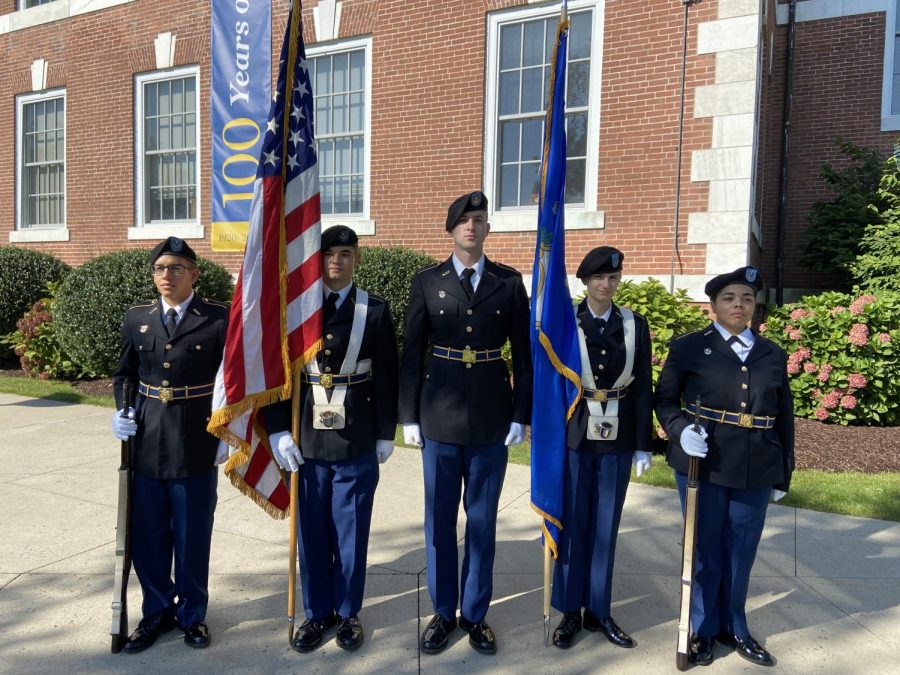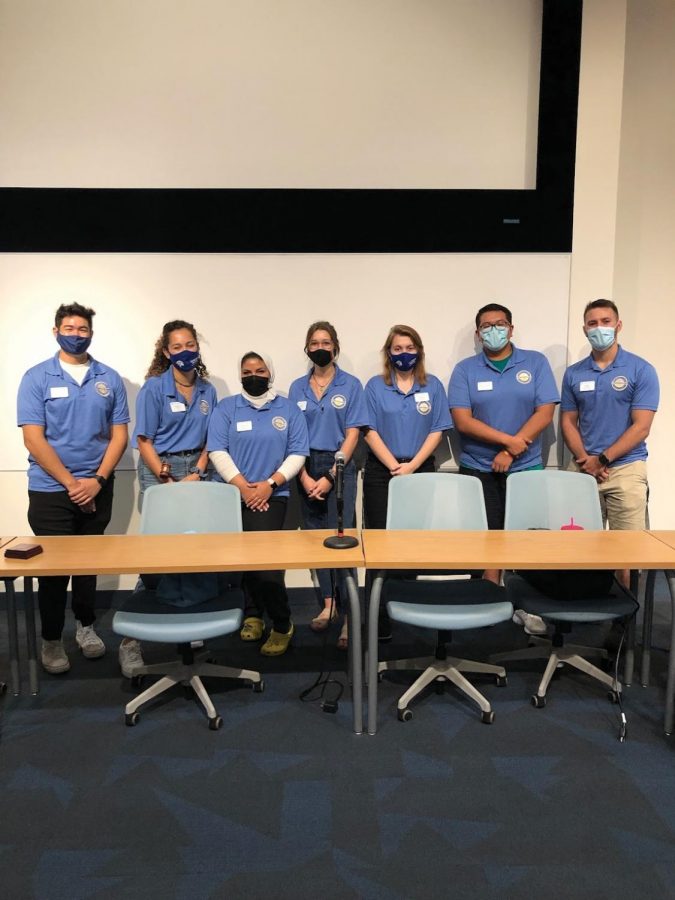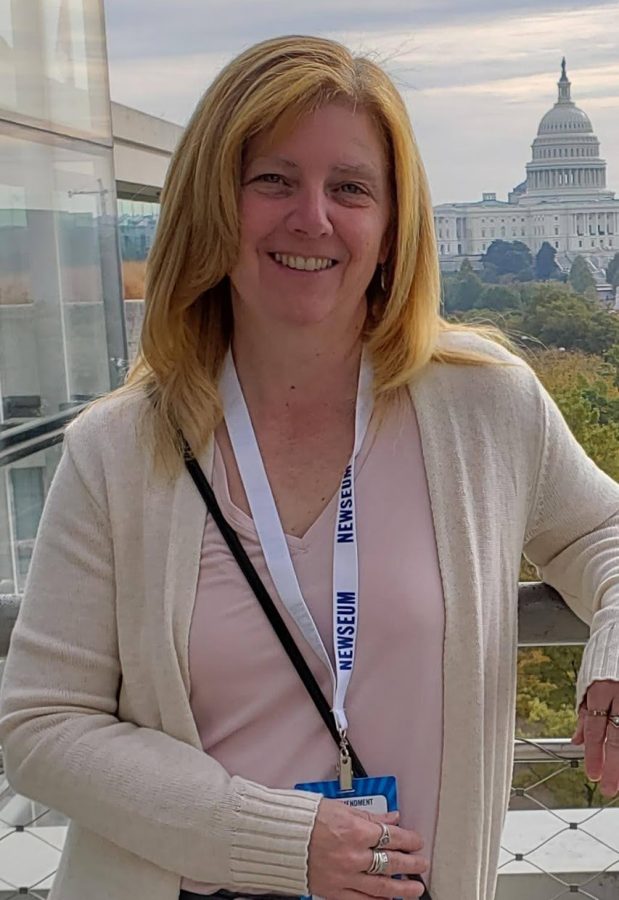Upon entering the Seton Art Gallery, students’ feet touch an unusually soft surface. A bed of real grass replaced the linoleum floor.

Its scent permeates the air as guests walk deeper into the exhibit, until they are surrounded by the smell of grass and distant sounds of nature. There are sounds of rushing water and crickets coming from an unknown source, and a voice narrating, “Even though I feel overwhelmed, I choose to love and accept myself.”
While one might expect to find the source of the narrator as the exhibit continues and guests are ushered to turn right around the corner, a luminescent structure appears instead. A small lit-up corridor led them to an enclosure. The three walls of the enclosure were painted like trees and have six little shelves set inward, two mushrooms displayed in each. The mushrooms have a tinge of golden dust, while the scene mimics one from a fairytale.
After guests turn two more corners, they come upon another lit structure, in which a video is projected. There is a combination of short videos of nature, and the human world, of construction, shopping, cars, the television news, and advertisements. Random voices speak throughout the meshing of videos, while no visible plot is present. This exhibit aims to draw awareness between the relationship of the natural and manmade worlds.
The elaborate process, that is now a living art exhibit entitled Constructed Ecology, began in July. SAG’s director, Laura Marsh, invited two artists, Michael Galvin and Kyle Skar, to be artists in residence. This means that they would stay, react, and work in the space for two months. Both Galvin and Skar live and work in New Haven, and have done a similar smaller scale project for Citywide open studios. Marsh wanted to see how they could react to the Seton Art Gallery, and what they would create within the space.
In mid-July, the artists-in-residence began their work, assembling their architecture, including the various structures, lighting, the mushrooms, and the grass. Masonite was added so roots wouldn’t take over the floor. Afterwards, the featured artists, Lisa Amadeo, Nicki Chavoya and Gary Velush, who have collaborated before on music videos and independent art videos, put together their video and sound parts.
However, the construction took longer than expected; the exhibit’s opening had to be pushed back one week. To stay fresh, the grass only got put in two days before the opening. Senior intern Melissa McLaughlin described how she has to water the grass every day, twice a day, with a spray bottle, and that the grass suffered over the weekend the blinds were left open. The grass also has to be cut, unless people keep walking through, but Marsh is glad that people, who use the gallery as a shortcut, still pass through; they have no choice but to experience the space.
Marsh also explained how the grass has caused some controversy around campus.
“I didn’t expect so many different types of reactions,” Marsh said. “Some people from the biology and art departments are very intrigued, whereas others feel challenged by it.”
The Art Exhibit’s staff is hoping that the grass will be allowed to stay until the exhibit closes on Oct. 26.
The Constructed Ecology exhibit is not only a visual exhibit, but one that plays with sound, touch, and smell to create an immersed experience for the viewer. Traditional expectations of galleries are broken, as architecture and nature are meshed into one.












